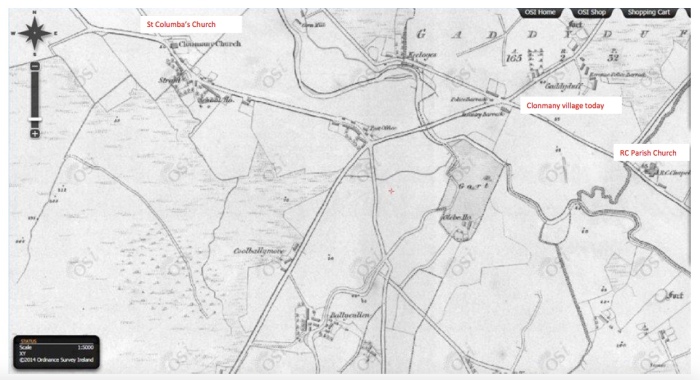Picturesquely situated on a gentle rise just outside the village of Clonmany, St Columba’s Church in Straid is the perfect vantage point from which to appreciate the natural beauty of Cluain Maine, (Maine’s meadow). In spite of the fact that it has never, within living memory, been used as a church,“The Old Church” is nonetheless held in great affection by the people of Clonmany. There are many stories associated with it, stories about the incorrigible Gadaí Dubh and his sheep rustling henchman, about the two brothers who end up on opposite sides of the great divide at the time of the Penal Laws. For generations of locals these stories have been taken to be the stuff of folklore. Only relatively recently, as a result of research undertaken on behalf of The McGlinchey Summer School, have many of them been found to have their basis in historical fact.
The ground on which The Old Church stands has been sacred ground for centuries. Many locals are already aware of its monastic heritage. There are also suggestions that its religious significance might even pre-date Christianity. It is certainly the case that Maine established a monastery on this site in the seventh century, which became the centre of the parish system in the middle ages. In 1610 the established Church acquired the site and Frederick Hervey, Earl Bishop of Derry, commissioned the present structure to be built in 1772. And it is now a matter of documented fact that, in the 18th century, Donal McLaughlin was Protestant Rector here, resident in a magnificent mansion, while his brother, Peadar, a poor Franciscan friar, hid out in the nearby hills.

For centuries, the graves of The Old Church lay silent, until Catherine McWilliams, on behalf of The McGlinchey Summer School, unearthed their importance. Within its walls, lie not only the descendants of the ancient arch-enemies, Chichester and O’Neill, Planter and Gael, now lying side by side, but also the infamous landlord McNeill, felled by a rusty hook, local poet Denis O’Donnell, who sang about the revels at The Pollan Fair, and alongside them, the ordinary people of Clonmany, both Catholic and Protestant who shared their lives and times.
Whether for quiet contemplation or historical investigation, The Old Church still draws locals and visitors alike within its walls. For this reason, The McGlinchey Association, an off-shoot of The McGlinchey Summer School, is currently engaged in conserving this extremely important and beautiful ruin, so that it can continue to inspire and inform generations of Inishowen people to come.
Margaret Farren


